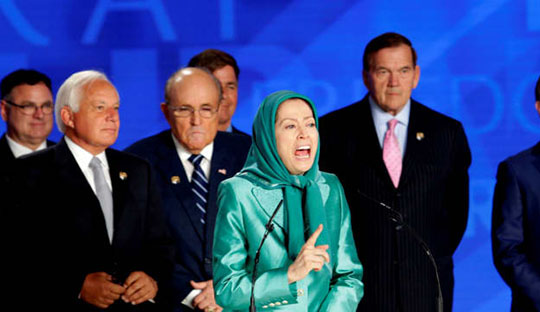Ahmad Chalabi, the Iraqi politician who died in 2015, is widely known for pushing for the U.S. invasion of Iraq. From exile he helped provide the manufactured excuses needed by the United States for the invasion in 2003 but was eventually denied any share in power after the fall of Saddam Hussein.
Chalabi was perhaps the Iraqi most closely associated with President George W. Bush’s decision to go to war. He cultivated close ties with journalists in Washington and London, American lawmakers, the neoconservative advisers who helped shape Bush’s foreign policy, and a wide network of Iraqi exiles, many of whom were paid for fabricating and distributing intelligence against Saddam Hussein’s government.
It was later revealed that his group, the Iraqi National Congress, received more than $100 million from the C.I.A. and other agencies between its foundation in 1992 and the start of the war. He cultivated friendships with a circle of hawkish republicans – Dick Cheney, Douglas J. Feith, William J. Luti, Richard N. Perle and Paul D. Wolfowitz – who were central in the United States’ march to war.
Chalabi was used by the American warmongers to ‘sell’ the claim that Saddam Hussein possessed weapons of mass destruction and that he had refused to fully cooperate with United Nations weapons inspections as an excuse to launch war against the country.
But the case for the war was predicated on flawed intelligence, and a 2006 report by the Senate Intelligence Committee concluded that “false information” from sources affiliated with the “Iraqi National Congress” was used to support key intelligence community assessment on Iraq and was widely distributed in intelligence products prior to war.
Did Chalabi push the U.S. into the war or was he rather used by advocates of war to produce excuses and announce false intelligence? It was later proved that Chalabi was truly the loudspeaker of the White House warmongers whenever they were not able to directly show their faces. They needed a so-called opposition group to do the job for them or at least to pull the trigger.
Now the Iranian Maryam Rajavi, leader of the Mojahedin-e Khalq Organization (MEK, MKO, NCR, NLA, Rajavi Cult) is playing (and has played for a long time) the same role as the Iraqi Ahmad Chalabi, this time in relation to Iran.
Now the Iranian Maryam Rajavi, leader of the Mojahedin-e Khalq Organization (MEK, MKO, NCR, NLA, Rajavi Cult) is playing (and has played for a long time) the same role as the Iraqi Ahmad Chalabi, this time in relation to Iran.
On Monday September 30, 2019 in Washington, the group, which has close ties with the warmongers of the White House, announced baseless details blaming the missile drone attack against Saudi oil facilities on Iran. Without any evidence, the MEK claimed that the decision for the attack was taken by the Supreme National Security Council, presided over by President Rouhani and with the presence of Foreign Minister Zarif.
This echoes the small task the MEK was previously given to promote the manufactured nuclear crisis against Iran. In August 2002, Alireza Jafarzadeh, the representative of the National Council of Resistance (a front organization for the MEK) to the U.S., appeared in a press conference in Washington and issued some nuclear intelligence against Iran. This was later proven to have been handed over to the MEK by Israeli Intelligence. This was being done while the group was listed as a terrorist entity by the U.S. State Department. The Americans only needed an Iranian opposition group to start the crisis, it wasn’t fussy about which one.
The MEK is a highly controversial group. It was responsible for killing several Americans in Iran during the 1970s. In 1992 its members attempted a violet attack on Iran’s U.N. delegation in New York. In 2012 it was removed from the U.S. State Department’s list of foreign terrorist organizations after an intense lobbying campaign that included paying retired U.S. government officials and leaders. Its supporters in the White House say the MEK has been an essential conduit for sensitive information about Iran’s nuclear program.
MEK members in Iraq were largely disarmed after the 2003 American invasion. The group had been granted protection by Saddam Hussein before the invasion and by the US army after the invasion and lived at Camp Ashraf for two decades. After the U.S. troop withdrawal in 2009, many group members moved in 2012 from Camp Ashraf to Camp Liberty, an abandoned U.S. military base. They have been now granted a remote and isolated base in Albania under the Trump Administration where the leaders have reconstructed their cultic internal relations and are doing their job in exactly the same way as performed by Ahmad Chalabi – the manufacture of excuses and false narratives to pave the way for war.
The MEK’s well financed meetings in Paris and now Albania are used as a platform for American politicians to announce their policy of regime change in Iran and the imposition of ‘maximum pressure’ sanctions. It is the only so-called opposition group which fully and unequivocally supports this policy to push the U.S. into war with Iran.
The Trump administration is conflicted about Iran. Even as the warmongers in the White House push for war there are others who are beginning to pull back. The MEK played its role in promoting accusations about Iran’s involvement in the Saudi missile attack. But this time, unlike Chalabi’s accusations, neither politicians nor media have given credence to Maryam Rajavi’s claims. It could well be that history lessons have been learned.
Ebrahim Khodabandeh
Maryam Rajavi mirrors Chalabi

153
previous post

